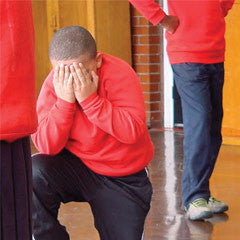
Is there a future for zoos in the 21st Century?
£14.95
Debate, discuss and explore this question from the perspective of a zoo keeper, an elephant, a child or a scientist. Develop your ability to empathise, interpret body language and present your opinions in creative ways to persuade people to your point of view. This scheme of work enables students to investigate and consider the role of zoos today. By using the vivid picture book Zoo by Anthony Browne your class will be immediately engaged in the subject and inspired to examine the original purpose of zoos and evaluate whether zoos are still relevant today. Using in-role, interviewing techniques, visual literacy and empathy your class will be inspired to form an opinion in response to the issue, concluding with a creative class debate.
Each lesson encourages the pupils to question, to listen to peers, consider and respond, predict, justify opinions and imagine the future of zoos in the 21st century. The scheme is linked to KS2 speaking, listening and responding, group interaction, drama objectives, language variation and composition from the English national curriculum. Elements of PSHE are woven into the plan and pupils are actively encouraged to make connections and justify their ideas and opinions by drawing on evidence in the text or from research. The combination of drama strategies, picture book images and photographs will contribute to developing their visual literacy and critical thinking. All the activities enable the students to rehearse their ideas and opinions orally before committing them to paper as a piece of discursive writing.
Learning objectives:
- Speak with confidence about their point of view
- Understand and respect both sides of an argument and an opinion
- Listen, understand and respond appropriately to each other in group and whole-class discussions
- Ask relevant questions to clarify, extend and follow up ideas and opinions shared in in-role activities
- Talk effectively as a member of a group, qualifying and justifying their opinion or idea
- Use dramatic techniques such as hot seating, in-role, thought tracking, soundscape and freeze frames to explore different perspectives and points of view
- Evaluate how they and others have contributed to the shared debate
- Decipher the multi-layers within the images and become co-authors in the story
- Apply their experiences to compose a discursive piece of writing
Number of lessons: 5



